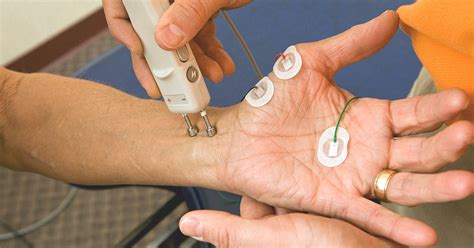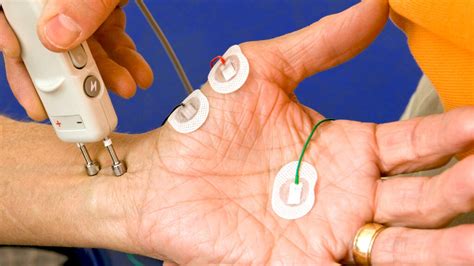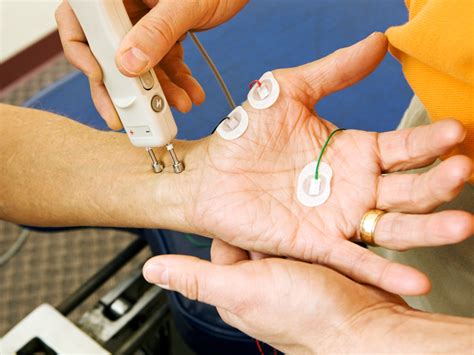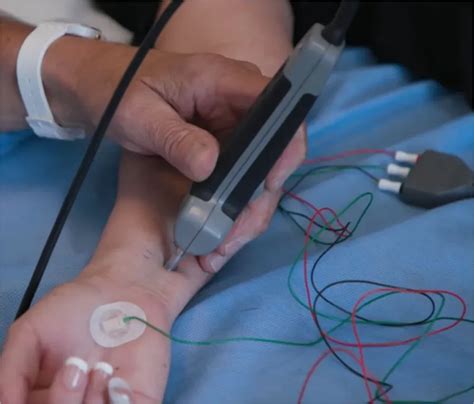Intro
Master the EMG test with 5 expert tips, reducing painful experiences through proper preparation, electrode placement, and muscle relaxation, ensuring accurate electromyography results and minimizing discomfort.
Electromyography (EMG) is a diagnostic test used to assess the health of muscles and the nerve cells that control them. While EMG tests are generally considered safe and effective, they can be painful for some individuals. Understanding the process and what to expect can help alleviate anxiety and make the experience more manageable. Here's an overview of the EMG test and tips to help minimize discomfort.
The EMG test involves the insertion of a small needle electrode into the muscle to record the electrical activity. This can cause some discomfort, especially if the muscle is already sore or if the individual has a low pain threshold. However, the pain is usually temporary and subsides once the test is completed. It's essential to discuss any concerns or fears with the healthcare provider before the test to ensure a smooth and comfortable experience.
The preparation for the test is crucial in minimizing discomfort. This includes avoiding strenuous activities before the test, wearing loose and comfortable clothing, and ensuring the skin is clean and free of lotions or oils. By understanding the test procedure and taking necessary precautions, individuals can better cope with any potential pain or discomfort associated with the EMG test.
Understanding the EMG Test Procedure

The EMG test procedure typically begins with the healthcare provider explaining the test and answering any questions. The individual will then be asked to lie down or sit comfortably, depending on the muscle being tested. The skin is cleaned with an antiseptic solution, and a small needle electrode is inserted into the muscle. The individual may feel a pinch or a stinging sensation as the needle is inserted, but this usually subsides quickly. The test can take anywhere from 30 minutes to an hour, depending on the number of muscles being tested.
Benefits of the EMG Test
The EMG test provides valuable information about the muscle and nerve function, helping healthcare providers diagnose a range of conditions, including muscle disorders, nerve damage, and neuromuscular diseases. The test can also help monitor the progression of a condition and the effectiveness of treatment. By understanding the benefits of the EMG test, individuals can better appreciate its importance and feel more motivated to undergo the test, despite any potential discomfort.Preparing for the EMG Test

To prepare for the EMG test, individuals should avoid strenuous activities, such as exercise or heavy lifting, for at least 24 hours before the test. This can help reduce muscle soreness and make the test more comfortable. It's also essential to wear loose and comfortable clothing, making it easier to access the muscles being tested. Additionally, individuals should avoid applying lotions or oils to the skin, as these can interfere with the test results.
Tips for Minimizing Discomfort
Here are some tips to help minimize discomfort during the EMG test: * Take deep breaths and try to relax, as tension can exacerbate pain. * Use positive self-talk and visualization techniques to distract from any discomfort. * Consider listening to calming music or nature sounds during the test. * Ask the healthcare provider to explain the test procedure and answer any questions, helping to alleviate anxiety. * Consider taking a pain reliever, such as acetaminophen or ibuprofen, before the test, but only after consulting with the healthcare provider.What to Expect During the EMG Test

During the EMG test, the individual may feel a pinch or a stinging sensation as the needle is inserted into the muscle. This discomfort is usually temporary and subsides once the test is completed. The healthcare provider may ask the individual to contract and relax the muscle being tested, which can help assess muscle function. The test can take anywhere from 30 minutes to an hour, depending on the number of muscles being tested.
After the EMG Test
After the EMG test, the individual may experience some soreness or bruising at the needle site. This can be managed with over-the-counter pain relievers, such as acetaminophen or ibuprofen. It's essential to follow the healthcare provider's instructions for post-test care, including any necessary follow-up appointments or treatments.Common Questions and Concerns

Individuals may have questions and concerns about the EMG test, including its safety, effectiveness, and potential risks. It's essential to discuss these concerns with the healthcare provider before the test to ensure a smooth and comfortable experience. Some common questions and concerns include:
- What are the potential risks and complications of the EMG test?
- How long does the test take, and what can I expect during the procedure?
- Will I experience any pain or discomfort during the test, and how can it be managed?
- What are the benefits of the EMG test, and how can it help diagnose and treat conditions?
Conclusion and Next Steps
In conclusion, the EMG test is a valuable diagnostic tool for assessing muscle and nerve function. While it can be painful for some individuals, understanding the test procedure and taking necessary precautions can help minimize discomfort. By discussing concerns and questions with the healthcare provider, individuals can feel more prepared and confident about undergoing the test. After the test, it's essential to follow the healthcare provider's instructions for post-test care and attend any necessary follow-up appointments.What is the purpose of the EMG test?
+The EMG test is used to diagnose and monitor conditions affecting the muscles and nerves, such as muscle disorders, nerve damage, and neuromuscular diseases.
Is the EMG test painful?
+The EMG test can be painful for some individuals, but the discomfort is usually temporary and subsides once the test is completed.
How long does the EMG test take?
+The EMG test can take anywhere from 30 minutes to an hour, depending on the number of muscles being tested.
We hope this article has provided valuable information and insights about the EMG test. If you have any further questions or concerns, please don't hesitate to comment below. Share this article with others who may benefit from this information, and consider consulting with a healthcare provider to learn more about the EMG test and its applications.
